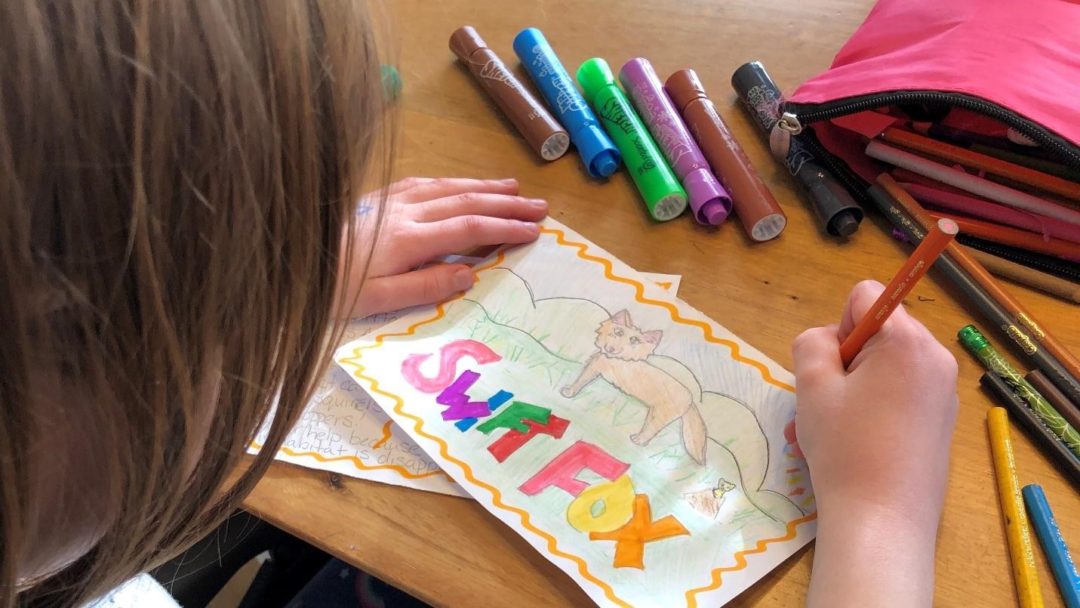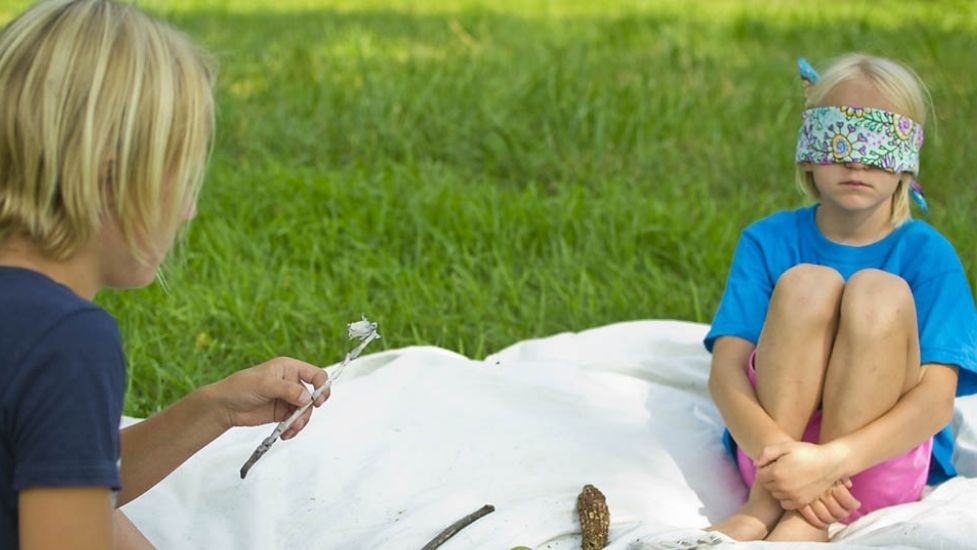Investigate a real grizzly bear's behaviour!
PURPOSE
Using GPS data points, this activity asks students to determine whether or not the behaviour of a local Kananaskis bear is healthy and normal. Building on their knowledge of grizzly habitat, students will examine the location points of Sophie in an attempt to deduce her history through her actions today.
GRADE LEVELS
7-12
TIME NEEDED
40 minutes

Curriculum LINKS
Science 7, Unit A, Outcomes 1,3,4
Science 9, Unit A, Outcomes 1,4
Science 14, Unit D, Outcome 2
Science 20, Unit D, Outcome 3
Biology 20, Unit B, Outcome 1
MATERIALS NEEDED
Download: Where is Sophie? – Map (pdf)
Download: Where is Sophie? – Story (pdf)
Instructions
- Discuss the characteristics of habituated bears with the class. Habituated bears seem to be fearless of humans and show a tendency to wander into campgrounds, travel on roads and act oblivious to human activity. It is important to note that bears become habituated through what they consider to be positive experiences with humans. For example, if people leave food on their picnic table unattended, a hungry bear may be drawn to the food to feast. Bears exposed to human food or garbage will learn to associate food with humans. As a result, they may even seek humans out in order to get their “reward.” Most habituated bears are relocated or killed. The expression, “A fed bear is a dead bear” holds true.
- Distribute the map titled, Where is Sophie? to students and ask them to scrutinize her movements. The location points were collected using GPS technology. In the early fall of 2000, Sophie was captured by the Eastern Slopes Grizzly Bear Project researchers and fitted with a GPS collar, providing researchers information about where Sophie lives. The location points illustrate her movements over a period of 44 days.
- Ask the students:
- Where does Sophie like to forage?
In the fall of 2000, Sophie frequented the Mt. Kidd alpine meadow, the Kananaskis River, Kananaskis Village, Kananaskis golf course, Mt. Kidd R.V. Park and the Ribbon Creek Day Use area. She also spent some time on the Nakiska ski hill. - Does Sophie spend time in the “zone of influence,” the 500 m area that surrounds human features like roads, trails and buildings? What implications does this have for Sophie and people who enjoy Kananaskis Country?
- Yes, Sophie spends a lot of time in the zone of influence, which indicates an unwariness of people. Sophie appears to be habituated and could potentially be a threat to humans, in which case she would probably be relocated or destroyed.
- What are some possible reasons why Sophie spends so much time near human populated areas?
- Some possible reasons include:
- Sophie may have been fed by humans and has learned that careless campers leave food rewards.
- Sophie may have had an inadequate and disruptive upbringing as a cub, and may have learned some bad habits from her mother.
- Read aloud or independently The Story of Sophie, a collared bear in Kananaskis Country.
- Some possible reasons include:
- Where does Sophie like to forage?
Discussion
- After reading the story, ask the students:
- How did the story make you feel? Did you feel sorry for the mountain biker, Sophie, the hikers, or for all subjects in the story?
- Do you feel that the mother should have been captured?
- Students should realize that before capturing a bear and relocating it in the wild or to a zoo, alternative measures can be taken to ‘teach’ a bear proper behaviour. These measures, referred to as aversive conditioning, can re-train bears to fear and avoid people. Aversive conditioning can involve firing rubber bullets and using bear bangers. A highly effective and somewhat new way to deal with problem behaviour in bears is the use of Karelian Bear Dogs. These dogs have been bred and used by grizzly bear hunters and farmers in Finland and western Russia for centuries. Today they are used as bear shepherds, to help prevent bears from being habituated to human areas.
- Do you think Sophie should have been relocated?
- Often, relocated bears are killed – either by other bears, or by legal and illegal hunting outside park boundaries. CPAWS believes that the federal and provincial agencies should provide more resources to its staff, enabling them to practice aversive conditioning with habituated bears, rather than just removing them to other areas, where they will likely get into more trouble or be killed by other bears.
- What do you think happened to Sophie’s sister, Bear #70?
- It is likely that she was killed or severely injured to allow a person to cut the collar off her neck. Her body may have been taken by poachers or illegal hunters or scavenged by predators.
- What you can do to help bears like Sophie?
- Brainstorm with your class different ways they can help bears like Sophie. For ideas, explore our website and join our Action Challenge.
More Bring Nature Home for Teachers
Bring Nature Home is our online database of tried-and-tested CPAWS Southern Alberta activities! Here are some ways that you can bring nature home (or to the classroom) today!

Species at Risk Postcards

Can I Eat You?

